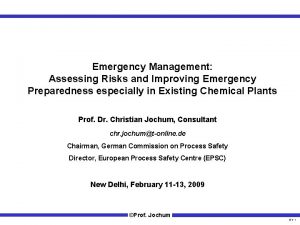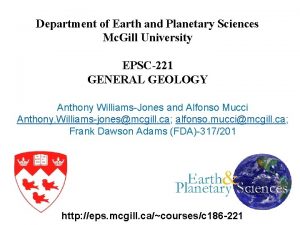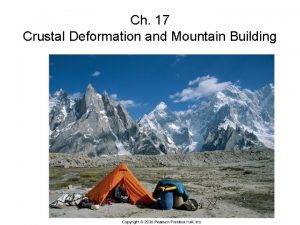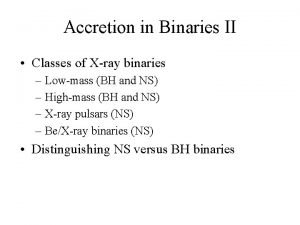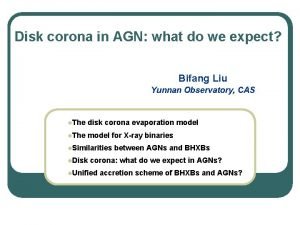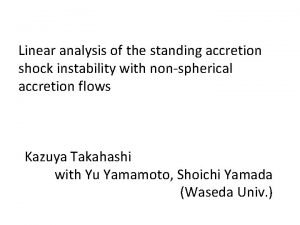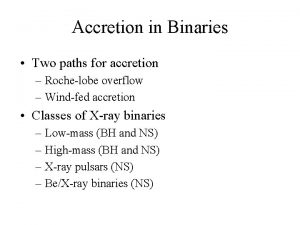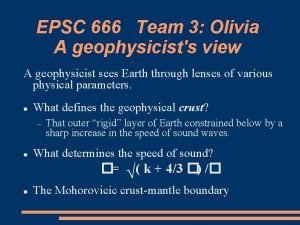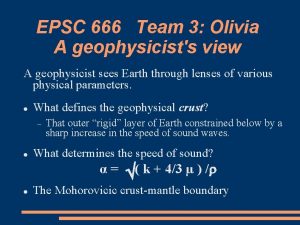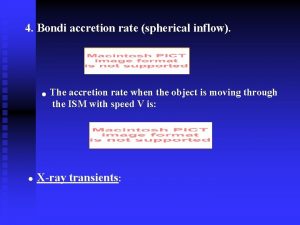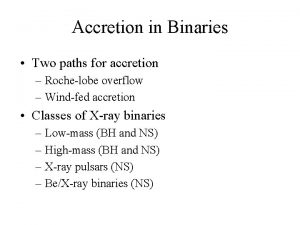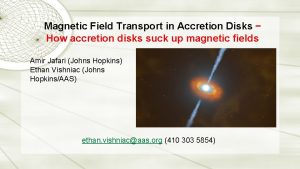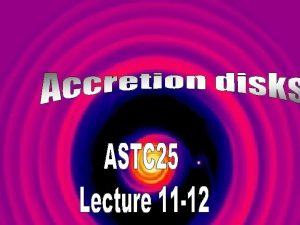EPSC 644 Team 3 Olivia Accretion of Earth










- Slides: 10

EPSC 644 Team 3: Olivia ● Accretion of Earth from solar nebula ● Geophysical differentiation of Earth ● Moon formation ● Magnetics and the core geodynamo ● Heat budget of our planet

Accretion The Crab Nebula The Solar Nebula (painting) © W. K. Hartmann PSI © NASA

Physical differentiation ● Fe: 35%; O: 30%; Si: 15%; Mg: 13%: olivine! ● Scenarios. . . – – ● Earth forms cool and homogeneous, heats up due to radiogenic element decay and so differentiates. . . Earth forms from already partially differentiated planetesmals. . . , heats up and continues further differentiations. . Physical differentiation of Earth. . . – – Where is all the Fe? It has sunk into the core! Essentially density driven: denser compositions sink to the deepest interior.

The “Big Whack” The Moon forms. . . PSI © W. K. Hartmann

The scenario “fits” data. . . ● ● The Earth has a large iron core, but the moon does not. Fe had already largely sunk into core. Earth has a mean density of 5. 5 gm/cm 3; moon, 3. 3 gm/cm 3. Moon has less iron. The moon has same 18 O, 17 O, 16 O composition as the Earth. Mars and the asteroids differ. Earth's Moon is “large”. The other terrestrial planets have only small moons or none at all.

Archean paleomagnetics Valet, J-P. , Time variations in paleomagnetic intensity, Reviews of Geophysics, 41 -1, 2003.

Geodynamo

Core http: //geomag. usgs. gov/movies/index. php? type=corefield&for mat=flash

Heat budget. . . ● The interior of the Earth is hot! Hot hot? – – ~ 1500 K at base of lithosphere ~ 2800 K – 3400 K at base of mantle ~ 5000 K at inner-core boundary ~ 5500 K at centre

Heat again. . . Why hot? Rapid heating following a cold accretion by decay of short-lived radionuclei (26 Al) – Residual gravitational potential energy from original accretion (to ~40%). – The geodynamo requires a heat drive. ● Core freezing, chemical differentiation and 40 K or U/Th (fission? ) in the inner core. – The mantle is convecting. ● Internal heating from K, U, Th decay as well as from the core beneath. –
